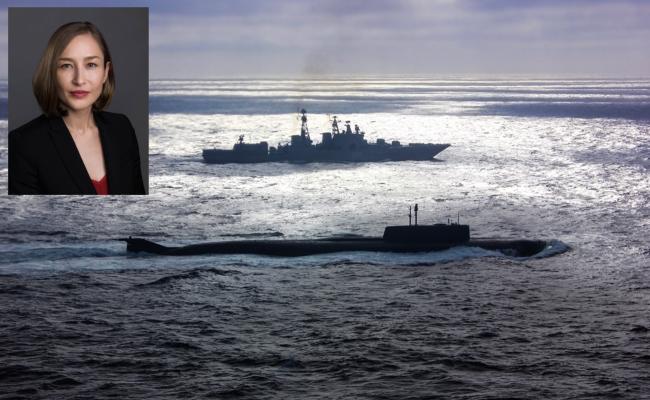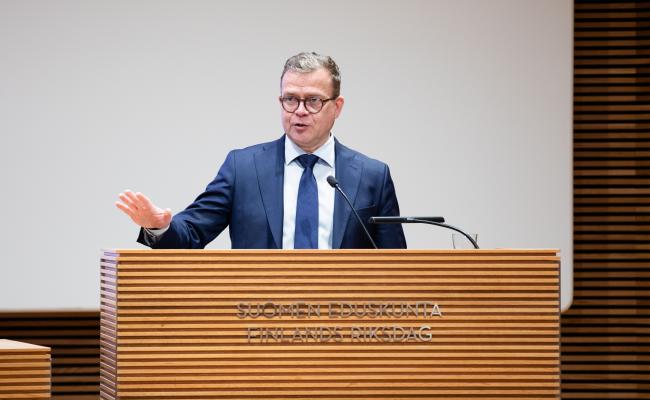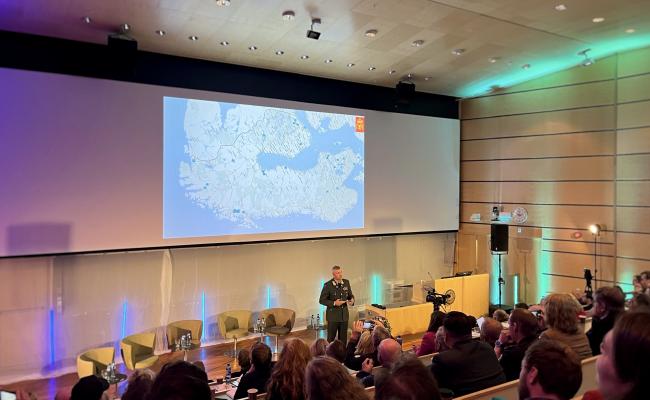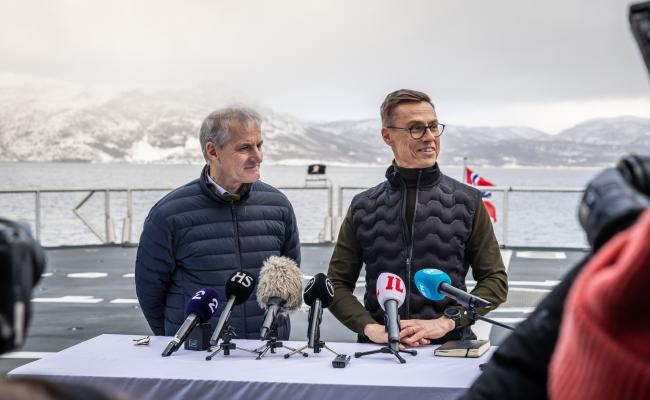De-escalation Is Best Achieved With Credible Deterrence and Defense, says Finnish Major General

The Deputy Chief of Staff for Strategy in the Finnish Defence Forces, Major General Sami Nurmi. (Photo: Astri Edvardsen)
Oslo (High North News): "The Russians only respect strength and determination," says Sami Nurmi, Deputy Chief of Staff for Strategy in the Finnish Defence Forces. He comments on the planned NATO forward land force in Finland and underlines the importance of allied competence in operating in Arctic conditions.
Finland has now been a member of NATO for nearly a year and a half.
"We are in a long learning process, and there is much work to do," says Major General Sami Nurmi, the Deputy Chief of Staff for Strategy in the Finnish Defence Forces.
A NATO Forward Land Force (FLF) on Finnish soil is one of the measures Finland is working on. Last week, it was announced that Sweden is prepared to take on the role of a framework nation for this force.
"As a NATO member and a frontline state vis-à-vis Russia, it is logical for us to consider the possibilities of more regular allied presence in Finland," says Nurmi to High North News.
"Such a presence is important for deterrence, but also as a demonstration of unity and joint determination to defend the alliance," he points out.
In the works
Lapland in Northern Finland has been referred to in Swedish and Finnish media as a possible location for the NATO force, but the countries' MoDs have not confirmed this, nor does Nurmi.
"The planning process around the FLF element has just started. All details, including the location, will be agreed upon later in the process," he says and continues:
"Establishing such a structure will take years. A central factor is that the force will likely be connected to exercise activity. The idea is not for major NATO troops to be deployed in Finland permanently but that there will be a lasting core supplemented in connection with exercises and training."
"But again, all details are open, pending political decisions."
The Finnish Ministry of Defence previously informed that the force will be scaled according to the security situation.
What other countries is Finland in dialogue with regarding participation in FLF?
"I cannot comment on that as this is a political matter managed by the ministry. Yet, it is logical to bring in troops from countries with relevant capabilities, as well as knowledge about and interest in operating in our area."
Finland's NATO integration
· In June, Finland received political support from NATO's ministers of defence to establish the aforementioned FLF structure and a NATO Multi Corps Land Component Command (MCLCC). These measures are part of Finland's objectives for integration into the alliance.
· The allied MoDs also approved organizing Finland and the other Nordic countries under Joint Force Command Norfolk, NATO's newest operational command. The final formal decision has not yet been made on this matter.
Allied exercise in Northern Finland
Can you say something about how Finland envisions allied exercise activity in the northern parts of the country?
"There has been allied exercise activity in Finland since we applied for NATO membership in the spring of 2022 after the start of the full-scale war in Ukraine. We have practically had the presence of foreign forces almost every day since. They have arrived from various nations and trained in different parts of the country," responds Nurmi and adds:
"We would like to continue this practice constructively as part of NATO's exercise plan and likely also in connection with the forward land force. We have great training areas in the North that allies also are interested in using to develop competence to operate in Arctic conditions."
Exercise Northern Forest
Will the international army exercise Northern Forest in Lapland be scaled up?
"I don't think so. Nordic Response will likely continue to be the biggest exercise in the North in the future. It is a very important exercise for the Nordic countries. Northern Forest is more of a follow-up," says the Deputy Chief of Staff for Strategy.
This year's edition of Northern Forest was conducted in May in Sodankylä and Rovajärvi in Northern Finland, with nearly 6,500 soldiers. The majority were Finnish, around 2000 were American, and about 100 were Norwegian. Staff personnel from Sweden also participated.
The exercise took place as an extension of Nordic Response, a large-scale allied exercise across the Cap of the North in March, and subsequent Immediate Response in April, which involved American forces and materiel moving from the port of Narvik, Northern Norway, via Northern Sweden to Northern Finland.
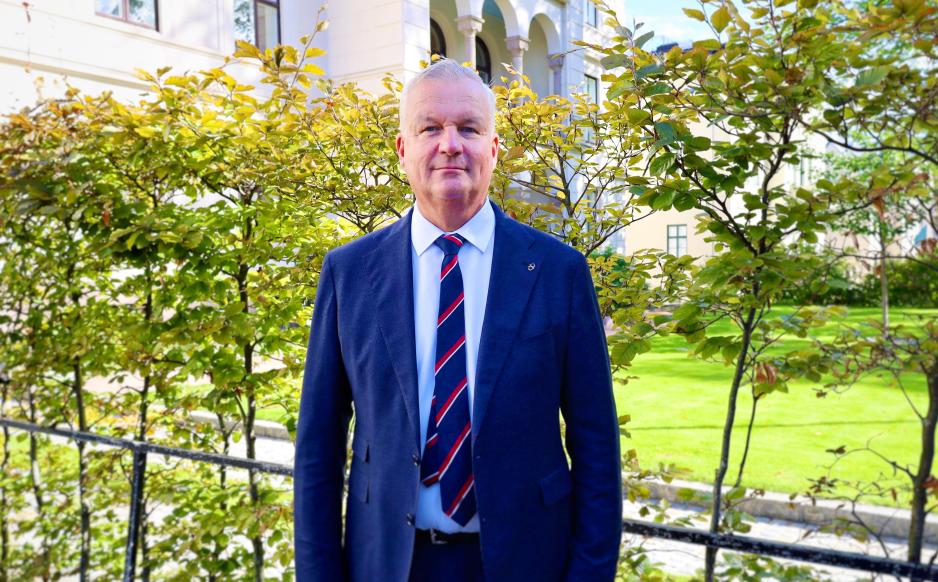
"Allied presence in Finland, be it south or north, is naturally important to us, as it is for all our allies," says Major General Sami Nurmi. (Photo: Astri Edvardsen)
Necessary expertise and infrastructure
Nurmi utilizes the experience from the spring's Northern Forest to illustrate the significance of area knowledge and the right equipment to operate efficiently on the Cap of the North.
"US Army soldiers of the 10th Mountain Division based in Louisana came to Northern Finland when there was a lot of snow on the ground. They brought skis, but they were alpine skis, which work poorly in Lapland. Thus, they had to go to the Jaeger Brigade in Sodankylä for Finnish skis to be able to maneuver," he says and continues:
"Then the snow melted. They had ordinary combat boots in leather and became very wet on their feet. Then they had to go back to Sodankylä, where they received rubber boots and were once again ready to operate."
"Nonetheless, it was a good experience. They were able to get from Narvik to Rovajärvi and said the journey went quite well. The point is that what we need in the North is allies forces that come and exercise here, that have the knowledge and equipment needed. We also have a lot of work to do when it comes to infrastructure for military mobility, such as roads and railway from Narvik to Northern Finland through Sweden.
In June, Finland's president and the Prime Ministers of Norway and Sweden agreed to establish a military transport corridor across the Cap of the North. The work consists of identifying bottlenecks, updating laws and regulations, as well as investing in necessary infrastructure.

American infantry soldiers in the 10th Mountain Division in borrowed rubber boots during the Northern Forest 24 exercise in Lapland. Here, they advance towards an airstrip in Sodankylä. (Photo: Gavin Hardy/US Army)
No restrictions
Norway has self-imposed a restriction on allied military activity east of the 24th longitude, which runs just east of Hammerfest in Northern Norway. What is the Finnish perspective on allied military activity near the border with Russia?
"The current governmental program describes quite well that Finland has not set any restrictions on its NATO membership. So we have no geographic limitations for allied troops moving in different parts of the country," answers Nurmi and continues:
"We use all the exercise areas suitable for larger international exercises. Also, the issue ofgeographical framing is different in Finland as almost everything is close to the long border with Russia."
"At the same time, of course, we do not provoke. We are trying to make allied activity more of a daily business. Not "knocking on" the border, but using our exercise areas, such as Rovajärvi in Lapland, on a regular basis."
Deterrence with a hotline backup
HNN meets Nurmi at the Arctic Security Conference in Oslo, which was recently held with the Fridtjof Nansen Institute as the lead organizer.
There, as a panelist, the major general was asked a question about how to de-escalate the current tense situation between the West and Russia following the Ukraine war.
"De-escalation is best achieved with credible deterrence and defense. The Russians only respect strength and determination," asserts the Finnish deputy chief for strategy.
At the same time, Finland, like Norway, has open military communication channels with Russia to avoid misunderstandings and unintentional escalation.
"Our hotline to the Russian Armed Forces is tested weekly, and the Russian side answers. The conversation is very short. The Finnish Border Guard also maintains regular contacts on appropriate levels with their counterparts in Russia," says Nurmi.
Contact with the Russian border guard service in the FSB is, however, at a significantly lower level than normal as the border between Finland and Russia is still closed, he points out.
The Finnish government closed the entire border with Russia in November 2023 in response to a wave of migration that was considered to be controlled by Russian authorities. This winter, some border crossings were tried to reopen, but they were quickly closed again.
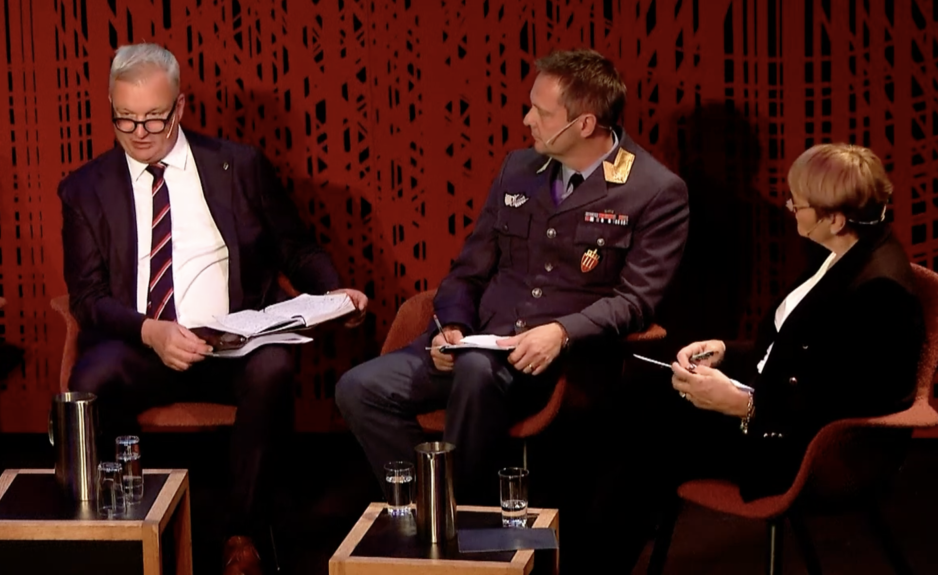
"We must also prepare for the future. The war in Ukraine will end at some time, and Russia will not disappear. We must find ways to discuss issues with the Russians in the future," Sami Nurmi also pointed out at the conference. Here with co-panelist Colonel Gjert Lage Dyndal, Chief of Operations in the Norwegian Defence Staff, and moderator Kate Hansen Bundt, Secretary General of the Norwegian Atlantic Committee. (Screenshot from the Arctic Security Conference)
Awaits Russian measures in the border areas
Do you see any military response from Russia to Finland's NATO memberships? Has Russia changed its posture along the border?
"On paper, yes. The Russians have publicly announced that they will reorganize their forces with a new command structure in the West. In practical terms, we haven't seen any major changes yet. It remains to be seen what they will do in the future. They will certainly take some measures, but at what level and pace will probably depend on the situation in Ukraine," says Nurmi.
"More specifically, what happens there is likely the key to how long it will take for Russia to rebuild their land forces in the North, which have suffered significant losses. We are following this very closely."
Unlike the ground forces, Russian northern air forces and naval forces are still operating at roughly the same level as before, the major general points out.
Also read (article continues below)
Harsh Russian rhetorics
Furthermore, Nurmi points out that Russian bombers at Olenya air base on the Kola Peninsula, near the border with both Finland and Norway, are being used to attack Ukraine and that the Ukrainians respond with drone attacks on this airbase.
"Personally, I don't think we are so far away from the day when Russia will blame Finland, Estonia, or perhaps even Norway of supporting the Ukrainian drone operations. Because the Russian rhetorics is really harsh almist on a daily basis, at least against Finland," he says and elaborates:
"It is mostly political rhetoric. Russia blames us for breaking up the good relationship we had on a political level. From the Russian perspective, NATO is an enemy, and we are now part of this enemy. The Russians also blame us for things that happened during WW2. These statements are likely meant for a Russian audience, but seen from the outside it is crazy what they accuse us for. It is worrying."
The Arctic and the Baltic Sea
At the Arctic Security Conference, the Finnish Deputy Chief of Staff for Strategy showed a map of the Nordics and the immediate ocean areas, as well as the western part of Russia and the Baltics.
"On this map, we see a Nordic area without borders. Here we must cooperate closely with allies as if it was borderless," says Nurmi.
"The red circles indicate strategically important areas to Russia. In North-West Russia, we have the Kola Peninsula. Because Russia is challenged in the Baltic Sea as all the other Baltic Sea countries are now in NATO, the military importance of the Kola Peninsula, both operationally and strategically, will likely be emphasized in the future," he notes.
The major general also highlights the 1343-kilometer-long Finnish-Russian border, which is important for Finland and NATO on one side and Russia on the other.
"When we entered the alliance, the border between NATO and Russia more than doubled. Now, it is closed due to Russia's operations with illegal migrants last fall and early this year. At one point, we must consider whether we can open it. This will be a difficult issue also in the future," says Nurmi and adds:
"Note that Norway and Estonia did not experience the same flow of illegal migration in the same period. This wave was clearly directed toward Finland."
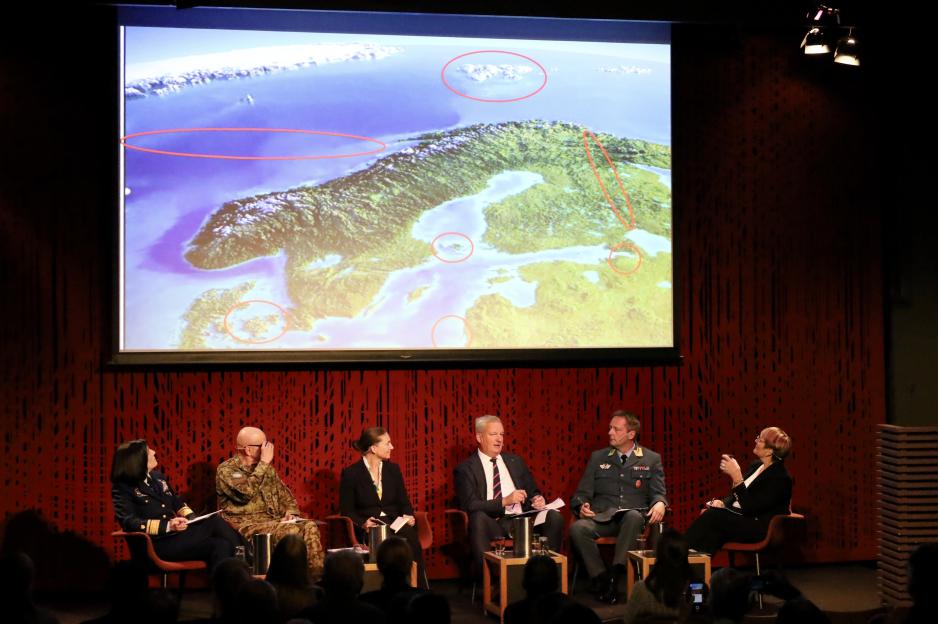
Sami Nurmi shows the aforementioned map. Marked in red are the following areas: To the left: The Greenland, Iceland, United Kingdom (GIUK) gap. Farthest north: Svalbard. Top right: The Kola Peninsula and the Finnish-Russian border. Just below: the Gulf of Finland with St. Petersburg, Russia's second-largest city, and the Russian Baltic Fleet's naval base, Kronstadt. In the middle of the Baltic Sea: the Swedish island of Gotland. Bottom right: The Russian exclave of Kaliningrad with the Baltic Fleet's second base, Baltiysk. Bottom left: The Danish straits that connect the Baltic Sea with the North Sea. (Photo: Astri Edvardsen)
An eye on NORDEFCO
The map also shows that the now-allied trio of Norway, Sweden, and Finland constitutes a 'strategic island' vis-à-vis the European continent, which also opens new wide-range opportunities for Nordic defense cooperation.
In that context, Finland sees the Nordic Defence Cooperation (NORDEFCO), which includes all five Nordic countries, as a highly relevant format, says Nurmi.
"Finland takes over the chairship of NORDEFCO from Denmark on January 1st, and we are now working on designing our program. Previously, NORDEFCO had projects that dealt with specific issues where we could do better together. With all the Nordics in NATO, there is now a great potential for cooperation around operative planning in a bigger picture," he says and continues:
"We already have structures within NORDEFCO that we can trust, and together, we can design a joint agenda with a long-term perspective. Operative cooperation is very important to strengthen our security and defense."
Last week, the five Nordic Chiefs of Defense signed a joint defence concept for the region. The concept aims to synchronize the countries' defense plans and facilitate, among other things, the conduct of joint operations through common operational planning, complementary to national and allied planning.
"NORDEFCO is simply a good tool and does not undermine the alliance in any way as this cooperation takes place within an overarching NATO framework," the major general points out.
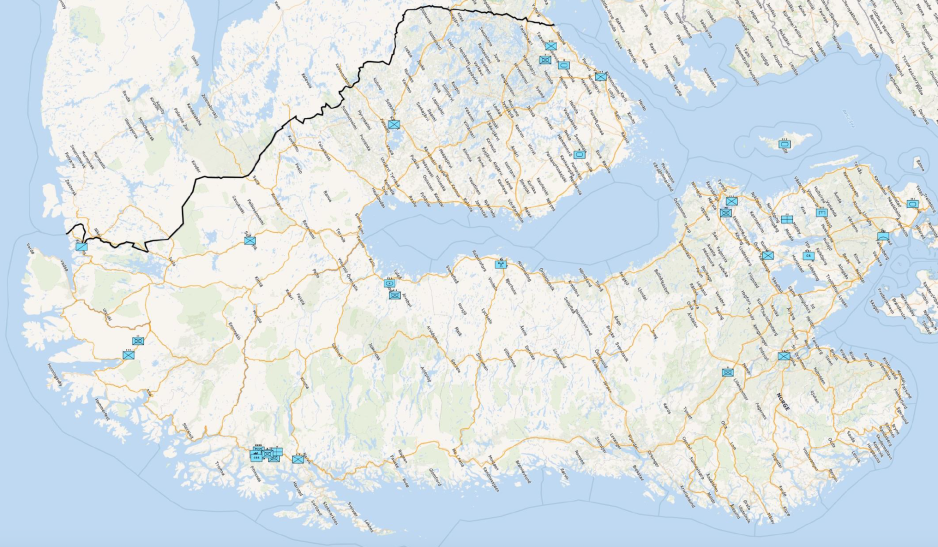
The entire Nordic region, from the High North via Finland's border with Russia and to the Baltic Sea, is now considered a joint operational area. This map shows Norway, Sweden, and Finland as a borderless landscape with important road connections and land forces. The Finnish and Swedish army units are primarily concentrated in the south, while Norway has the majority of its land forces in the north. (Map: the Norwegian Army)
The defense cooperation with the US
Finland, like the other Nordic countries, also emphasizes cooperation with the United States.
In early summer, Finland ratified a bilateral defense cooperation agreement (DCA) with the US. Sweden did the same. Norway also updated its supplementary DCA with Washington D.C.
The Finnish-American agreement gives the US unimpeded access to and use of 15 military bases and other facilities in Finland, so-called agreed areas. Five of these are located in the North.
How will this agreement be implemented in Northern Finland?
"I was involved in the negotiation process, so I know this agreement quite well. The objective is to make it easier for American forces to come to Finland for training and exercises, as well as to be able to reinforce us in case of crisis and war. The 15 agreed areas cover the north, south, east, and west quite well," says Nurmi.
"The agreement entered into force on September 1st, and we have now started negotiations with the US regarding the practicalities of implementation. There are still some administrative questions regarding tax and customs, as well as entry and exit to Finland, which need to be clarified."
"At some point, we will probably conduct an exercise to test some things in the DCA. We will see what the US presence in Finland will look like in the future. No final decisions have been made regarding this," says the Finnish strategy chief.
Do you experience stronger American interest in the northern parts of Finland?
"It is difficult to say. I believe that the Americans are interested in both the northern region and the Baltic Sea region, just as we do," he responds.
Finnish-American agreed areas in the North:
- Ivalo Border Guard Base
- Rovajärvi exercise area and military storage area
- Rovaniemi Air Station and the Jaeger Brigade garrison
- Tervola military storage area
- Veitsiluoto military storage area


